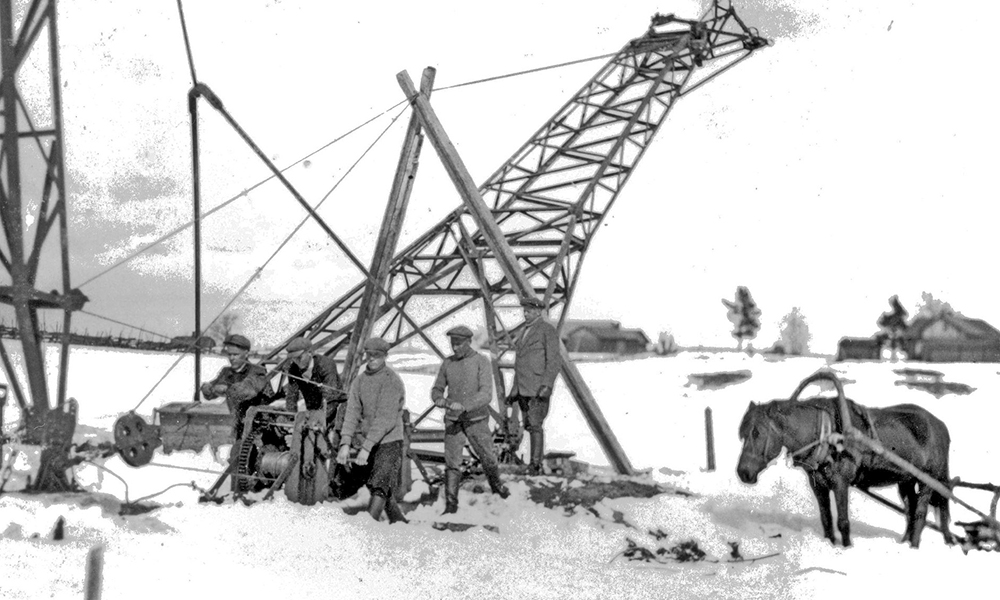
The idea of transmitting electricity over longer distances originated in Central Europe in the late 1800s. The significance of electrification for society was gradually recognised in Finland as well. After a period of major construction work, the country’s first high voltage transmission line – Rautarouva (Iron Lady) – was commissioned on 16 January 1929. Rautarouva was a 110 kilovolt transmission line section between Imatra and Turku and the first part of a main grid that now covers the entire country. The event was also historical because construction of the transmission line was the first large national project carried out in Finland.
The year 1929 marked the start of development that has made our main grid one of the best electricity transmission systems in the world.
The main grid was initially built by various industrial operators. Construction of transmission grid was an absolute necessity in terms of Finland’s industrial development. After a number of different construction phases covering several decades, the main grid now covers all of Finland and it conveys nearly all the electricity consumed here.
Ownership of the main grid was transferred to the newly-established Fingrid in 1997. Fingrid now owns Finland’s main grid and all significant cross-border connections. It comprises approximately 14,300 kilometres of transmission lines, 114 substations and 4 HVDC connections with neighbouring countries.

The biggest challenge lies ahead
Finland’s main grid currently covers all 400 and 220 kilovolt lines and roughly half of the 110 kilovolt grid lines. Long transmission connections and large power levels require high voltages to minimize transmission losses. The main grid is in excellent condition in comparison to other countries. In terms of regional equality, it has been important to maintain a single price area for electricity in Finland.
However, there is still plenty of work to do. The main grid is facing the biggest challenge in its history, because the need for electricity will continue to increase in the future. The majority of electricity production and especially wind power is located in Northern Finland, but consumption is greatest in Southern Finland. We need even more efficient transmission connections between the north and the south.
Grid development will continue. The transition to renewable forms of energy will require continuous and flexible and to major extent longterm grid development. Development plans currently extend to 2040’s .
- We opened a website to commemorate the 90-year history of the main grid, which includes information about the past, present and future of the main grid. New content will be added to the website throughout the year.
- Link to the website (in Finnish): www.fingrid.fi/kantaverkko90
A video created in honour of this special year describes main grid development from the 1920s to the present day in just a few minutes. Listen to the video with sound turned on:







